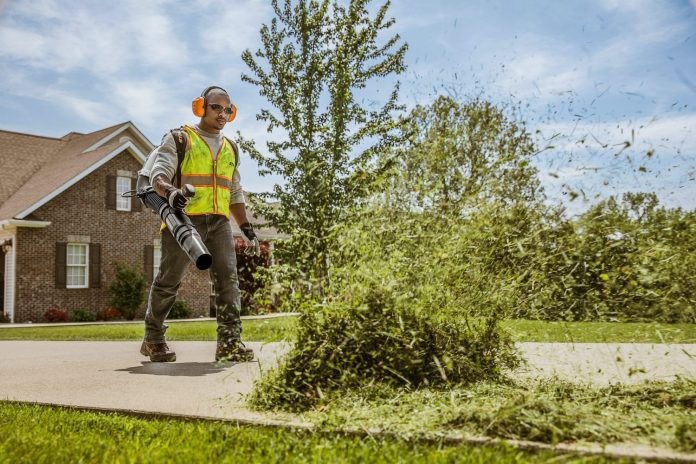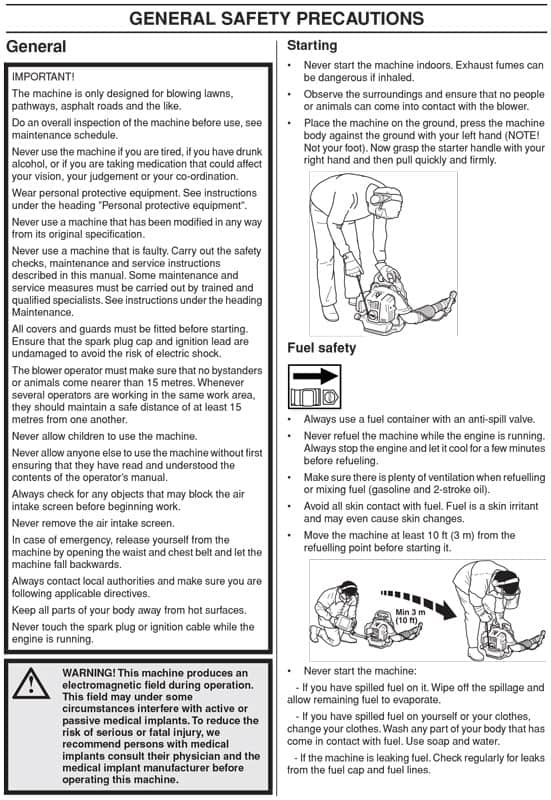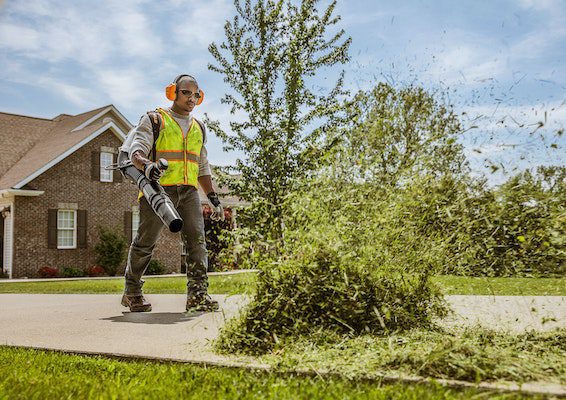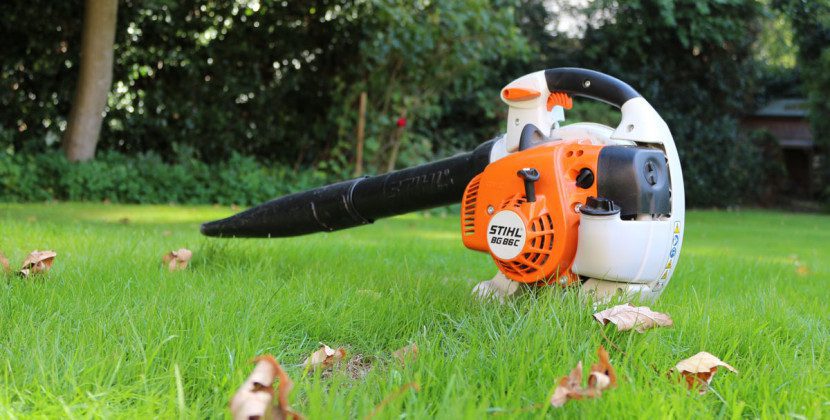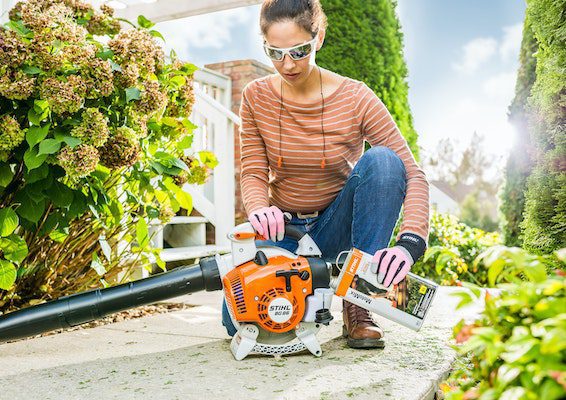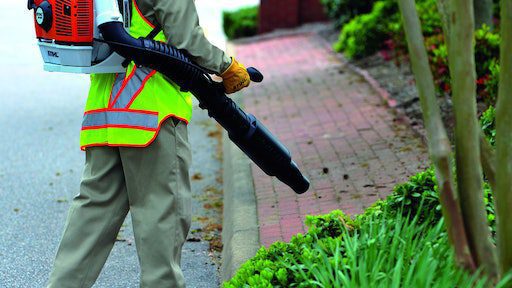Are you a proud owner of a leaf blower, ready to tackle those piles of leaves in your yard?
While leaf blowers can make your outdoor chores a breeze, it’s essential to prioritize safety.
By following a few simple precautions, you can ensure a safe and enjoyable experience with your leaf blower.
This article will explore some vital safety tips that will protect you, your surroundings, and anyone nearby while operating a leaf blower.
So, let’s jump right in and learn how to harness the power of your leaf blower while staying safe!
Choosing the Right Leaf Blower
When choosing the right leaf blower, there are a few factors to consider. The size and power of the leaf blower are crucial in determining its effectiveness. You may opt for a more powerful blower if you have a large yard with lots of leaves.
On the other hand, if your yard is small and you only have a few leaves to deal with, a smaller and less powerful blower would suffice. Consider the size of your property and the amount of debris you must clear when selecting a leaf blower.
Additionally, reading and following the manufacturer’s instructions when using a leaf blower is essential. Each blower may have specific guidelines and safety measures to be adhered to.
These instructions provide valuable information on operating the machine safely and effectively. By following the manufacturer’s instructions, you can ensure that you use the leaf blower correctly and minimize potential risks.
Lastly, check for any safety certifications when purchasing a leaf blower. Look for certifications such as UL (Underwriters Laboratories) or CSA (Canadian Standards Association), which indicate that the blower has undergone rigorous testing and meets safety standards. Choosing a leaf blower with the appropriate safety certifications can give you peace of mind, knowing that the product has been deemed safe for use.
Preparing Yourself for Leaf Blowing
Before starting any yard work with a leaf blower, you must prepare yourself by wearing appropriate clothing and protective gear.
Loose-fitting clothing or accessories can get caught in the blower’s moving parts, posing a danger to you. It is best to wear snug-fitting clothes and avoid loose jewelry or accessories that could become entangled in the blower.
Checking the weather conditions is another crucial step in preparing for leaf blowing. Please avoid using the leaf blower during strong winds or rain, as it can make the task more challenging and increase the risk of accidents. Choose a calm and dry day to ensure safe and efficient leaf blowing.
Inspecting the area for any potential hazards is also essential. Look for any objects that could be thrown by the blower or pose a tripping hazard, such as rocks, branches, or garden hoses.
Clearing the area of these obstacles before operating the leaf blower will help prevent accidents and ensure a smooth and safe blowing experience.
Safety Measures During Operation
While operating the leaf blower, you should follow several safety measures to protect yourself and others. First and foremost, always maintain a firm grip on the blower. The powerful airflow generated by the blower can cause it to jerk or move unexpectedly, so a secure grip is crucial to avoid losing control.
Keep a safe distance from bystanders and pets. The high-speed air produced by the leaf blower can cause debris to become airborne, potentially injuring anyone nearby. Having an apparent radius around you while operating the blower is best to prevent accidental injuries.
Avoid pointing the leaf blower at people or objects. Directing the airflow towards others can cause discomfort or pose a risk of injury. Always aim the blower in a direction away from people, pets, and fragile objects.
Using the correct blowing technique is also essential for safety and efficiency. Start at the edges of the area you are clearing and work towards the center. This technique prevents debris from being blown towards yourself or others. Additionally, be cautious of any obstacles or debris that may be hidden in the leaves, as these can be thrown by the blower and cause injury.
Handling Gasoline-Powered Leaf Blowers
Gasoline-powered leaf blowers require special attention and care. To ensure safe operation, use the gasoline recommended by the manufacturer. Using the wrong type of gasoline can damage the engine and increase the risk of accidents. Refer to the owner’s manual or consult the manufacturer for the correct fuel specifications.
When handling gasoline, it is essential to store and transport it safely. Keep gasoline in an approved container for fuel storage and be mindful of its placement—store gasoline in a well-ventilated area away from any open flames or sources of heat. Properly secure the container to prevent spills or leaks when transporting gasoline to refuel the leaf blower.
Never start the engine of a gasoline-powered leaf blower indoors. Gasoline fumes can be highly flammable and pose a severe risk of fire or explosion. Always start the blower in an open, well-ventilated area like your yard or driveway.
When refueling the leaf blower, make sure to do so in a well-ventilated area. Avoid refueling near an open flame or any potential sources of ignition. It is best to wait until the engine has cooled down before adding more fuel to reduce the risk of accidents.
Electrical Safety with Electric Leaf Blowers
Electric leaf blowers offer a convenient and environmentally friendly option for clearing leaves. However, it is essential to follow electrical safety precautions when using them.
Use outdoor extension cords designed explicitly for electric leaf blowers. These cords are typically rated for outdoor use and are more durable. Regular household extension cords may not be suitable for outdoor conditions and can present a safety hazard.
Inspect the cords before each use to ensure they are in good condition without any signs of damage or fraying. A damaged cord can pose a risk of electric shock or fire. If you notice any issues with the cord, avoid using it and replace it immediately.
Keep the cords away from water or wet surfaces to prevent electric shock. Avoid running the cord through puddles or wet grass. If it starts raining while you are using the leaf blower, stop using it and unplug it from the power source immediately.
Consider using a ground fault circuit interrupter (GFCI) outlet. A GFCI outlet monitors the flow of electricity and can automatically shut off the power in case of a ground fault or electrical leak. Using a GFCI outlet adds an extra layer of protection against electric shock.
Preventing Hearing Damage
Leaf blowers can generate high noise levels, leading to hearing damage if proper precautions are not taken. To protect your hearing, wear ear protection while using the leaf blower. Earplugs or earmuffs specifically designed for noise reduction can significantly reduce the risk of hearing damage.
Avoid long exposure to loud noise by taking breaks during prolonged leaf-blowing sessions. Rest your ears by stepping away from the noise and taking short breaks. This will help prevent fatigue and reduce the risk of hearing damage.
Consider using a leaf blower with lower noise levels. Some models are designed to operate at quieter levels while still maintaining efficiency. Choosing a leaf blower with lower noise levels can help protect your hearing and minimize any disturbance to your neighbors.
Protecting Your Eyes
Clearing leaves and debris with a leaf blower can result in dust and small particles being blown into the air, potentially irritating or injuring your eyes. To protect your eyes, always wear safety goggles or glasses. This protective eyewear shields your eyes from flying debris and prevents eye injuries.
Keep your face away from the dust and debris generated by the leaf blower. Position yourself safely from the blown area to avoid any direct impact with particles. By keeping a safe distance, you can prevent debris from entering your eyes or causing irritation.
For added protection, consider using a face shield or mask. These additional safety measures can provide a barrier against larger debris or dust clouds, protecting your eyes and face from potential harm.
Avoiding Carbon Monoxide Poisoning
Carbon monoxide (CO) is a toxic gas that gasoline-powered leaf blowers can produce. It is essential to be aware of the dangers associated with CO and take precautions to avoid exposure.
Never use gasoline-powered leaf blowers indoors. Operating them in enclosed spaces, such as garages or basements, can lead to a buildup of carbon monoxide, which can be fatal. Always use gasoline-powered leaf blowers outside in well-ventilated areas.
Operate the leaf blower in an open space with proper ventilation. This allows any carbon monoxide produced to disperse safely into the atmosphere. Avoid using the blower near doors, windows, or other areas where fumes can enter enclosed spaces.
Be aware of any symptoms of carbon monoxide poisoning, including headaches, dizziness, nausea, confusion, and difficulty breathing. If you experience these symptoms while using a gasoline-powered leaf blower, immediately move to fresh air and seek medical attention.
Preventing Strain and Injury
Using a leaf blower for an extended period can strain your muscles and potentially lead to injury.
If needed, take breaks and rest your muscles to prevent strain and injury. Listen to your body and avoid overexerting yourself. Taking short breaks during leaf-blowing sessions can help prevent fatigue and reduce the risk of strain or injury.
Use proper lifting techniques when handling the leaf blower. Lift with your legs rather than your back to avoid straining your back muscles. Maintain good posture and stability while lifting or maneuvering the blower to minimize the risk of injury.
Avoid overexertion and pushing yourself too hard. Pace yourself and take breaks as needed. Remember that yard work is a physical activity, and listening to your body’s limits is essential to prevent injury.
Maintaining and Storing the Leaf Blower
Proper maintenance and storage of your leaf blower are vital to ensure its longevity and safe operation. Regularly clean and inspect the leaf blower to keep it in optimal condition. Check for any clogs or obstructions in the air intake or exhaust vents and clean them if necessary. Inspect the power cord or fuel lines for any signs of wear or damage and replace them if needed.
Follow the proper storage procedures outlined by the manufacturer. This may include emptying the fuel tank, cleaning the blower, and storing it in a cool and dry place. Proper storage helps prevent fuel or oil leaks and protects the blower from damage.
Keep the leaf blower out of reach of children. Store it in a secure and locked area to prevent unauthorized use. Leaf blowers can be dangerous if mishandled, and it is essential to take precautions to ensure that children do not access them.
In conclusion, a leaf blower can significantly simplify clearing leaves and debris from your yard. However, it is essential to prioritize safety when operating a leaf blower.
By considering the size and power of the blower, reading and following the manufacturer’s instructions, and checking for safety certifications, you can choose the suitable leaf blower for your needs.
Preparing yourself by wearing appropriate clothing, checking the weather conditions, and inspecting the area for potential hazards will help ensure a safe leaf-blowing experience.
Following safety measures during operation, carefully handling gasoline-powered or electric leaf blowers, and taking precautions to prevent strain, injury, and exposure to hazards such as carbon monoxide are vital.
Lastly, properly maintaining and storing the leaf blower will help prolong its lifespan and keep it in safe working condition. By following these safety precautions and guidelines, you can enjoy the benefits of a leaf blower while minimizing potential risks. Stay safe, and happy leaf-blowing!

